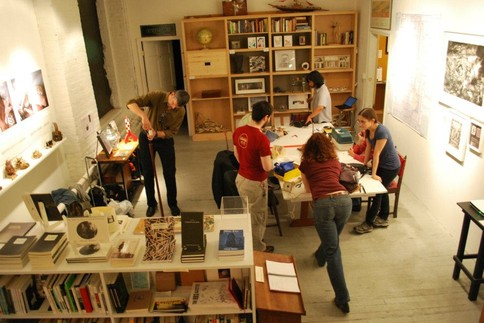Imagine your smartphone’s screen gets smashed, or your bike wheel gets buckled, or your favourite boots get a hole in them. What do you do? You could buy a replacement. Or you could join the worldwide trend of taking your broken stuff to a “repair café”.
The Bower Reuse and Repair Centre has just launched Australia’s first repair café, in Sydney’s inner west. The crowd-funded project will hold weekly repair sessions focusing on bikes, furniture and electrical items.
The first repair café was set up in Amsterdam in 2009, and the Repair Café Foundation says there are now more than 400 around the world.
What is a repair café?
A repair café is a free face-to-face meeting of skilled volunteers and local residents who want things fixed. Many run as a weekly, monthly or seasonal “drop-in” space at a local workshop or community centre, or offer stalls at a local fair or park. Visitors bring broken items from home and watch, learn or help as the repairs get done. Some things are fixed during the event, while for more challenging items people might be referred to local speciality repair shops.
Volunteers aren’t necessarily tradespeople but they are tinkerers – people who love to work with objects. Many people who love bikes have learned how to repair and maintain them; others can sew, alter and transform old clothes; still others are fascinated by how watches work.
In this sense, repair is a natural extension of understanding, and a creative process that gives immense satisfaction. Many visitors to repair cafés end up becoming repairers themselves.
“
Australians sent more than half a million tonnes of leather and textiles to landfill – more than ten times the amount that was reused or recycled. But as British researchers conclude, reusing old clothes reduces environmental impact and boosts social equity
The list of items successfully repaired at repair cafés is huge: bikes, clothing, cameras, mobile phones, computers, lawnmowers, luggage, lamps, toasters, CD players, microwaves – basically, almost anything you can physically bring along.
Why bother?
Our relationship with material objects has changed dramatically in the generations since wartime Britons were told to “make do and mend”. Simple repairs – resoling a shoe, mending a hole in a dress or gluing the leg of a chair – became less common as the disposable culture developed beyond small items like razors and pens, to include clothes, furniture and electronics. Mending came to be seen as old-fashioned and unnecessary, and cheap mass-production meant that anything less than perfect could be thrown away and replaced.
Last year, according to the ABS, Australians sent more than half a million tonnes of leather and textiles to landfill – more than ten times the amount that was reused or recycled. But as British researchers conclude, reusing old clothes reduces environmental impact and boosts social equity.
A culture of repair
Mending represents a deliberate attempt to resist the throwaway culture. Repair cafés get people talking and give them the chance to network and learn about the local resources available. And, perhaps most surprisingly for anyone who considers mending to be some kind of frugal drudgery, repair cafés can be fun and creative. After one event in Palo Alto, California, organisers wrote on their blog:
Visitors to the Repair Cafe were delighted. It seems we really struck a chord with people - not only touching their desire to do something positive about their accumulated, broken stuff, but also appealing to the desire people have for this kind of community participation. The event also sparked lots of ideas among different people who came by – partnerships with other community groups, a community tool library, and advice on how to do things better next time. Most of all, though, everyone just had fun.
Meanwhile, repair café organisers in Brighton, UK stress that:
Repairing is not only a creative and political activity – creating a sense of empowerment and independence – it is also a way of creating community cohesion and reducing waste.
New approaches to old stuff
This wave of 21st-century DIY enthusiasm is also evident in the rise of the Maker Movement, Hackerspace and other networks for hobbyists, students, or enthusiasts.
While repair cafés are general, other similar projects are more specialised, such as Remade in Edinburgh, which focuses on clothes and crafts, and Free Geek Chicago and the London-based Restart Project, which help people repair and upgrade their own phones and electronics without buying new ones.
Online, there is a host of resources about repair – from the basics of mending clothes, to detailed and complex repair guides for computers, phones, games consoles, cameras, and even trucks. Some “fixers” have challenged themselves to make it the entire basis of their lifestyle.
It’s the circular economy, stupid
“In a circular economy, repair cafés fit right in”, says the movement’s original founder Martine Postma. In rejecting the linear model of buy-use-dispose, the circular economy aims to keep resources moving around in the economy, rather than shunting them through it to a dead end, where they are lost to valuable use.
The Restart Project describes efforts such as theirs as the“inner circle of the circular economy” – small-scale solutions that involve sharing skills to develop a local economy of maintenance and repair, before items are even considered for recycling.
It might be quicker and easier to throw stuff in the bin, but it’s more expensive and less fun too.

